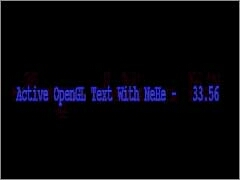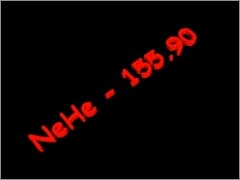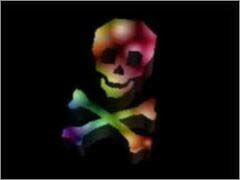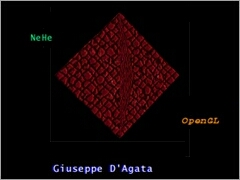ine
5341
Programa
OpenGL
Links
Bibliografia
Plano
de Ensino
|
Trabalhando
com Fontes e Texto de Diversos Tipos em OpenGL
Fontes
de Mapa de Bit
 |
I
think the question I get asked most often in email is "how can I display
text on the screen using OpenGL?". You could always texture map text onto
your screen. Of course you have very little control over the text, and
unless you're good at blending, the text usually ends up mixing with the
images on the screen. If you'd like an easy way to write the text you want
anywhere you want on the screen in any color you want, using any of your
computers built in fonts, then this tutorial is definitely for you. Bitmaps
font's are 2D scalable fonts, they can not be rotated. They always face
forward. |
Fontes
Desenhados
 |
Bitmap
fonts not good enough? Do you need control over where the fonts are on
the Z axis? Do you need 3D fonts (fonts with actual depth)? Do you need
wireframe fonts? If so, Outline fonts are the perfect solution. You can
move them along the Z axis, and they resize. You can spin them around on
an axis (something you can't do with bitmap fonts), and because proper
normals are generated for each character, they can be lit up with lighting.
You can build Outline fonts using any of the fonts installed on your computer.
Definitely a nice font to use in games and demos. |
Fontes
Texturizados
 |
Hopefully
my last font tutorial {grin}. This time we learn a quick and fairly nice
looking way to texture map fonts, and any other 3D object on your screen.
By playing around with the code, you can create some pretty cool special
effects, Everything from normal texture mapped object to sphere mapped
objects. In case you don't know... Sphere mapping creates a metalic looking
object that reflects anything from a pattern to a picture. |
Fontes
Simples com Texturas 2D
 |
The
original version of this tutorial code was written by Giuseppe D'Agata.
In this tutorial you will learn how to write any character or phrase you
want to the screen using texture mapped quads. You will learn how to read
one of 256 different characters from a 256x256 texture map, and finally
I will show you how to place each character on the screen using pixels
rather than units. Even if you're not interested in drawing 2D texture
mapped characters to the screen, there is lots to learn from this tutorial.
Definitely worth reading! |
|
|







